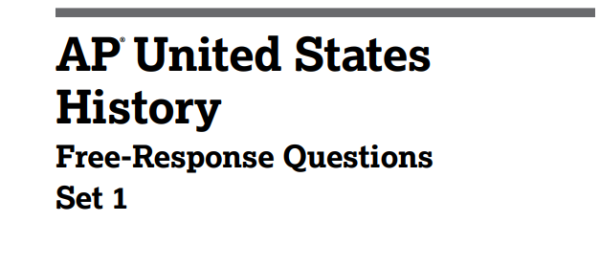Implementing racial sensitivity in classrooms
Obstacles arise of talking race in class
Due to the current political and social climate in schools, teachers are feeling the pressure to talk about race.
However, implementing a curriculum focused on race and racial sensitivity has become a challenge in some
AP classes and non-English and Social Science classes.Many teachers have made a conscious effort to gear their curriculum in the classroom towards current events, especially those concerning race and racism.
“Conversations about race occur every day both in terms within the content [of the class] andalso when making space and time for out-of-content things that just need to be discussed, especially in a social science space,” said AP Government and Honors U.S. History teacher Nora Bingham.
Even departments beyond English and Social Science said they have made an effort to incorporate social justice into science. The entire biology department has teamed up in an attempt to include social justice into their curriculum.
“In my Honors Biology class, we spent a few class periods on environmental injustice and environmental racism,” Nichole Lowery, an AP and Honors Biology teacher, said.
While teachers can select whether or not to discuss topics of race in their classes, administration provided teachers with different tools to have these conversations.
One tool Jones teachers have been given by administration is training workshops, provided by CPS.
Lauren Vrettos, Aquatics and P.E. teacher, believes that CPS has done a good job providing materials for teachers to use regarding these subjects.
The teachers, who have had conversations about current events as it pertains to race and racism, report that participation during these conversations varies across the board.
Vrettos claimed she gets “100%” participation in Nearpod, and maybe “70%” in the chat or unmuting. AP Lang teacher Brady Gunnink has also made
use of online platforms to create a safe space for his students.
“I give students space to talk about their thoughts and reactions,” said Gunnink. “If they want to write in the chat, if they want to speak about it directly in class; [even] if they want to write something to me separately.”
As a way for students to communicate with him outside of class about subjects like race, he gave
students an anonymous Google Form they could submit to voice their authentic thoughts and feelings without fear of repercussion or judgement.
While some classes may feel comfortable talking about race, this is not the case for every class. E-learning has made talking about these serious issues even more difficult. The challenge for many teachers is being unable to see students’ reactions to these conversations.
“Knowing what to do with the people who don’t say anything is a huge challenge,” said Gunnink.
“There are a lot of people who don’t participate. They just stay kind of quiet, and I don’t necessarily know where they’re at or what they need, so that’s another challenge.”
Lowery explained that it’s even more difficult to have conversations about race in her AP classes.
“It is more difficult because, in AP, I feel pressured to stick to straight content,” said Lowery.
“There’s that kind of content pressure to prepare for a test; I feel like I don’t do a good job of integrating [racial conversations] in the AP class, at least until May.”
Despite the challenges that e-learning presents, teachers are able to implement discus-
sions and curriculum about race in the classroom.
“[This year], the school seems as a whole– from the administration down– to be more intention-
al and try to respond to this better,” said Lowery.
This doesn’t mean the execution has been perfect. Jones still hasa lot of room for improvement.
“E-learning has made it much more difficult,” said Bingham.
Story from Volume 6, Issue 1








